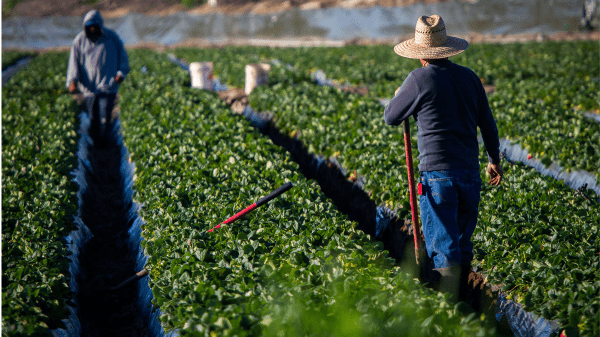As I said in a previous column, https://www.producebluebook.com/2023/02/13/ipfa-looks-at-produce-across-the-globe/ the first State of the Industry Report from the International Fresh Produce Association BB #:378962 is a valuable and comprehensive document. 2022-soi-report-en.pdf (freshproduce.com)
But it doesn’t say much about the salient issue facing the American produce industry: labor. There are a few vague references, such as: “Companies continue to find themselves navigating a climate of persistent unpredictability as they face labor, raw material and transportation shortages.”

Perhaps my assessment is not entirely accurate. The report does ask rhetorical questions such as: “What if . . . the best and brightest fought for jobs in agriculture?” and “What if . . . there is so much new talent choosing to help us change the world that we can’t hire them all?”
In short, the report focuses on middle- and upper-level jobs. Which are of course crucial. Yet, as necessary as it is to attract talent at this level, it may not be the first thing that many in the industry think of when they mention labor concerns. It is workers at the lowest level: in the fields and the packing plants. Fruit and vegetables go unpicked because there is nobody to pick them.
The report does not address this issue. But its importance to the produce industry cannot be overstated.
Of course, the industry needs to find adequate labor at all levels. But it must also treat those laborers fairly. I would not venture to say which proportion of produce companies do this, but I am confident that it is not exactly 100 percent.
This issue goes far beyond the question of labor per se. It has to do with the perception of the fruit and vegetable industry as a whole. Which often is not good. The media draw constant attention to its abuses. To take one recent example, Le Monde, the leading newspaper in France, saw the recent shootings in a Half Moon Bay, CA, greenhouse, as a consequence of worker mistreatment. Half Moon Bay mass shooting reveals misery of life for immigrant workers (lemonde.fr)
This often is the most prominent public face of the fruit and vegetable industry. Like many such perceptions, it is far from completely fair, but agriculture at this point needs to deal with it both in appearance and substance.
Until the industry improves conditions and pay for all workers and shows the public that it is doing so, the decades-old tactic of “telling our story” is a waste of time.
This issue has far wider implications. California is the heart of the fruit and vegetable industry, but agriculture complains (with some justice) that its interests are slighted by state government.
To the extent that this is true, it is because California politics is dominated by the population of the great coastal metropolises, who often have only the dimmest idea of what agriculture is like. But to the extent that they see it and know it, they regard it as exploitative and hardly worth much sympathy.
Of course, I don’t agree with this attitude, but it has had huge implications for apparently unrelated issues, such as water allocations.
“During our Executive Leadership Summit in March,” the IFPA report says, “industry leaders told us they believe talent attraction and corporate reinvention were the two most important trends dominating the world of work.”
That is true—as long as these leaders realize that these principles apply at all levels of their organizations.



